

| Region rejsu : Europa, Północna Europa |
| Firma : Norwegian Cruise Lines |
| Statek : Norwegian Dawn |
| Data rozpoczęcia : pt. 19 wrz 2025 |
| Data zakończenia : wt. 30 wrz 2025 |
| Liczba nocy : 11 nocy |
| Dzień | Data | Port | Wypłynięcie | Odpłynięcie |
|---|---|---|---|---|
| 1 | 19.09 pt. | Osło / Norway | 17:00 | |
| 2 | 20.09 sob. | Kristiansand / Norway | 07:00 | 18:00 |
| 3 | 21.09 niedz. | Aarhus / Denmark | 09:00 | 18:00 |
| 4 | 22.09 pon. | Kopenhaga / Denmark | 08:00 | 19:00 |
| 5 | 23.09 wt. | Hamburg / Niemcy | 07:00 | 20:00 |
| 6 | 24.09 śr. | Warnemünde / Niemcy | 07:00 | 21:00 |
| 7 | 25.09 czw. | Gdynia / Polska | 14:30 | 22:30 |
| 8 | 26.09 pt. | Kłajpeda (Memel) / Litwa | 08:30 | 18:30 |
| 9 | 27.09 sob. | Ryga / Łotwa | 10:30 | 18:30 |
| 10 | 28.09 niedz. | Tallinn / Estonia | 11:30 | 21:30 |
| 11 | 29.09 pon. | Helsinki / Finland | 07:00 | 16:00 |
| 12 | 30.09 wt. | Sztokholm / Sweden | 09:50 |
Zakwaterowanie w kabinie wybranej kategorii przez cały rejs (TV, telefon, prysznic/wanna, suszarka do włosów, klimatyzacja).
Wyżywienie w systemie „All Inclusive” z wyłączeniem napojów alkoholowych, w ramach programu Freestyle – dowolne godziny posiłków.
Zamówienia posiłków do kabiny przez całą dobę (dodatkowa opłata za dostawę od godz. 00:00 do 05:00).
Zestaw do przygotowania kawy i herbaty w kabinie.
Kawa, herbata, woda oraz mrożona herbata podczas śniadania, obiadu i kolacji.
Wszystkie atrakcje na pokładzie (wieczorne show, kluby nocne, muzyka na żywo itp.).
Rozrywki sportowe (tenis stołowy, koszykówka, tenis i golf).
Udział dzieci w klubach dziecięcych.
Siłownia, boisko sportowe, bieżnia, baseny i jacuzzi.
Opłaty portowe, taksy i podatki.
Dla gości kabin kategorii Suite i Penthouse (oprócz wszystkich powyższych):
• Serwis kamerdynera i konsjerża.
• Rozpakowanie bagażu w dniu zakwaterowania.
• Szampan, likiery, owoce, butelkowana woda i napoje gazowane (tylko dla gości Garden Villas i Owner’s Suites).
• Szampan, butelkowana woda i owoce w dniu wejścia na pokład.
• Dostawa posiłków do kabiny przez całą dobę.
• Mini-bar i ekspres do kawy espresso/cappuccino.
• Menu poduszek.
• Szlafrok i kapcie.
• Priorytetowa odprawa na statek.
• Eskorta do kabiny w dniu zakwaterowania.
• Indywidualny transfer z portu do lotniska (tylko dla gości Garden Villas).
Dodatkowo płatne:
• Napiwki dla personelu (doliczane do rachunku i płatne na końcu rejsu): 20 USD od osoby/dzień (dla gości od 3 lat i starszych) w kabinach kategorii Studio, Wewnętrzna, Z oknem, Z balkonem i Club Suite z balkonem; 25 USD od osoby/dzień (dla gości od 3 lat i starszych) w apartamentach strefy The Haven.
• Kasyno, telefon, internet, gry wideo.
• Napoje alkoholowe i niektóre napoje bezalkoholowe.
• Karaoke.
• Kręgle.
• Usługi pralni.
• Rezerwacje stolików w restauracjach alternatywnych.
• Wyrabianie wiz w portach pośrednich.
• Ubezpieczenie medyczne.
• Ubezpieczenie od rezygnacji z podróży (opcjonalnie).
• Przelot i transfery.
• Wycieczki fakultatywne w portach.
• Mini-bar w kabinie.
• Usługi indywidualne na pokładzie (SPA, salon fryzjerski, pralnia).
PAKIETY NAPOJÓW NA POKŁADZIE STATKÓW NORWEGIAN CRUISE LINE
Cena podstawowa rejsów Norwegian Cruise Line nie obejmuje napojów.
W cenę wliczone są jedynie herbata, kawa, woda oraz soki z automatów w strefie bufetu. Wszystkie pozostałe napoje, w tym minibar, woda w restauracjach, kawa spoza automatu itp. – są dodatkowo płatne.
Niektórzy goście, którzy przy rezerwacji dodali pakiet usług Free at Sea, mają możliwość korzystania z pakietu napojów Premium Beverage Package podczas rejsu.
PREMIUM BEVERAGE PACKAGE – 109 USD/osoba/dzień
Szeroki wybór napojów alkoholowych i bezalkoholowych klasy premium, zarówno na pokładzie, jak i na lądzie (podczas wizyty na prywatnej wyspie NCL Great Stirrup Cay). Pakiet obejmuje:
• wybrane wysokiej jakości koktajle i napoje alkoholowe o wartości do 15 USD za kieliszek;
• różne rodzaje piwa i wina serwowane w kieliszkach o wartości do 15 USD za kieliszek;
• 20% zniżki na wino i szampana w butelkach;
• nielimitowane napoje bezalkoholowe i soki.
Uwaga! Ten pakiet napojów musi zostać zakupiony dla wszystkich gości w kabinie w wieku od 21 lat. Goście w wieku poniżej 21 lat muszą zakupić Unlimited Soda Package.
Ważne! Na końcu rejsu do rachunku zostanie doliczona opłata serwisowa w wysokości 20% za obsługę napojów. Goście korzystający z pakietu Free at Sea nie płacą tej opłaty.
PREMIUM PLUS (od 21 lat) – 138 USD/osoba/dzień
Najszerszy wybór napojów na pokładzie. Dostępny również na prywatnej wyspie Great Stirrup Cay. Pakiet obejmuje:
• wszystkie koktajle i napoje alkoholowe;
• wszystkie piwa, szampany, wina w kieliszkach;
• wszystkie wina i szampany premium w butelkach z 40% zniżką;
• nielimitowane napoje bezalkoholowe i soki;
• nielimitowane napoje gazowane i niegazowane w butelkach;
• wszystkie rodzaje kawy i napojów firmowych Starbucks®;
• napoje energetyczne.
Uwaga! Pakiet Premium Plus można wykupić jako aktualizację pakietu Unlimited Open Bar, jeśli rejs został zakupiony w systemie Free at Sea.
Ważne! Pakiet napojów musi zostać zakupiony dla wszystkich gości w kabinie w wieku od 21 lat. Goście w wieku poniżej 21 lat muszą wykupić Unlimited Soda Package.
Na końcu rejsu do rachunku zostanie doliczona opłata serwisowa w wysokości 20% za obsługę napojów.
Goście z pakietem Free at Sea mogą dokonać upgrade’u do Premium Plus za dodatkowe 29 USD/dzień.
HAWAI BEVERAGE PACKAGE (tylko na Pride of America) – 109 USD/osoba/dzień
Szeroki wybór napojów o wartości do 15 USD za kieliszek. Pakiet obejmuje:
• koktajle;
• wina w kieliszkach, piwo i szampana;
• wodę, napoje chłodzące;
• kawę, napoje gazowane.
Pakiet dotyczy wyłącznie rejsów statkiem Pride of America dla 1–2 gości w kabinie.
Nie obejmuje minibaru ani napojów z automatów.
UNLIMITED SODA PACKAGE – 9,95 USD/osoba/dzień
Nielimitowane napoje gazowane przez cały rejs. Pakiet obejmuje:
• Coca-Colę, Diet Coke;
• Sprite;
• soki;
• Ginger Ale;
• toniki;
• Fanta i wodę sodową.
UNLIMITED STARBUCKS PACKAGE – 12,95 USD/osoba/dzień
Nielimitowane napoje w kawiarniach Starbucks.
Pakiet obejmuje wszystkie napoje marki:
• kawa;
• herbata;
• napoje firmowe.
WARUNKI KORZYSTANIA Z PAKIETÓW NAPOJÓW
• Pakietu napojów nie można współdzielić.
• Pakiety napojów muszą zostać zakupione dla wszystkich gości w kabinie.
• Dla osób niepełnoletnich (poniżej 21 lat) w przypadku zakupu pakietów alkoholowych przez innych gości w kabinie, należy wykupić Unlimited Soda Package.
• Pakiet nie może być wykupiony tylko na jeden dzień – obowiązuje na cały rejs.
• Jeśli gość w danym dniu nie korzysta z napojów, koszt pakietu nie jest zwracany.
• Goście mogą zamówić maksymalnie 2 napoje jednocześnie o wartości do 15 USD za kieliszek/szklankę.
• Armator zastrzega sobie prawo do zmiany cen pakietów napojów, o czym gość zostanie poinformowany z wyprzedzeniem.
• Niektóre marki napojów wymienione w materiałach reklamowych mogą być niedostępne w czasie rejsu w określonych regionach lub na konkretnych statkach (np. kawiarnie Starbucks nie są dostępne na wszystkich jednostkach Norwegian Cruise Line).
• Po zakończeniu rejsu do rachunku gości zostanie automatycznie doliczona opłata serwisowa w wysokości 20% za obsługę. Nie dotyczy rezerwacji w systemie Free at Sea.
Warunki płatności
Aby potwierdzić rezerwację, wymagany jest minimalny depozyt w wysokości 30% wartości podróży.
Płatność końcowa musi zostać dokonana nie później niż 90 dni przed rozpoczęciem rejsu.
Depozyt lub pełna kwota muszą zostać opłacone natychmiast po utworzeniu rezerwacji, zgodnie z warunkami płatności. Płatność może być dokonana przelewem lub za pomocą następujących kart kredytowych: American Express, MasterCard i Visa. Przy płatności kartą wymagamy następujących danych: numer karty, imię i nazwisko posiadacza karty, termin ważności karty, kod pocztowy posiadacza karty oraz trzycyfrowy kod bezpieczeństwa z odwrotu karty.
Warunki anulowania rejsów
Okres przed wypłynięciem Opłata za anulowanie rezerwacji
ponad 29 dni 20%
28–15 dni 50%
14–8 dni 75%
7 dni lub mniej 95%
W przypadku potwierdzonych pakietów Cruisetours obowiązują następujące opłaty za anulowanie:
Okres przed wypłynięciem Opłata za anulowanie rezerwacji
ponad 29 dni 20%
28 dni lub mniej 95%
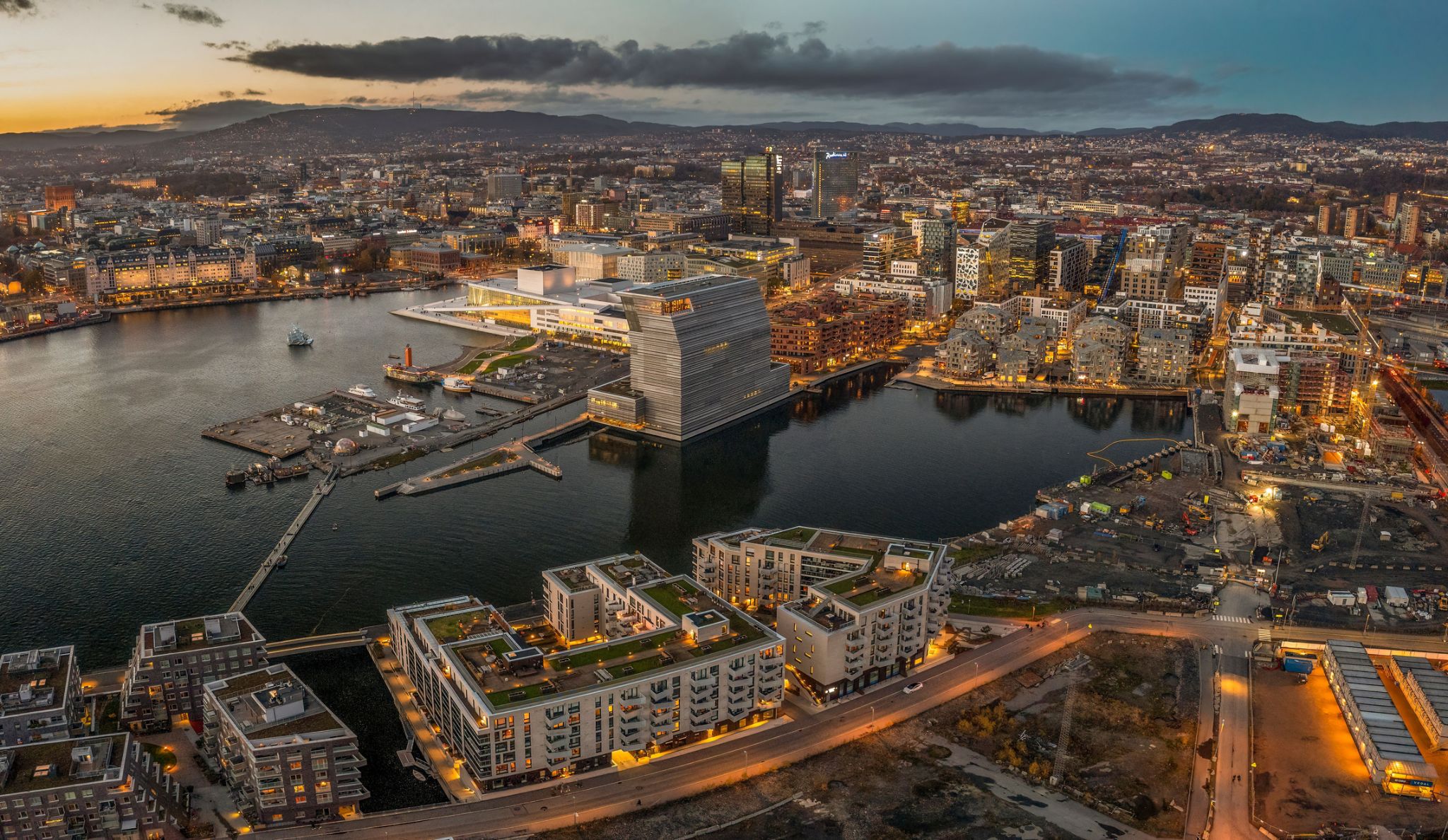
Oslo is the capital and most populous city of Norway. It constitutes both a county and a municipality. Founded in the year 1040 as Ánslo, and established as a trading place in 1048 by Harald Hardrada, the city was elevated to a bishopric in 1070 and a capital under Haakon V of Norway around 1300. Personal unions with Denmark from 1397 to 1523 and again from 1536 to 1814 reduced its influence, and with Sweden from 1814 to 1905 it functioned as a co-official capital. After being destroyed by a fire in 1624, during the reign of King Christian IV, a new city was built closer to Akershus Fortress and named Christiania in the king's honour. It was established as a municipality on 1 January 1838. The city's name was spelled Kristiania between 1877 and 1897 by state and municipal authorities. In 1925 the city was renamed Oslo.
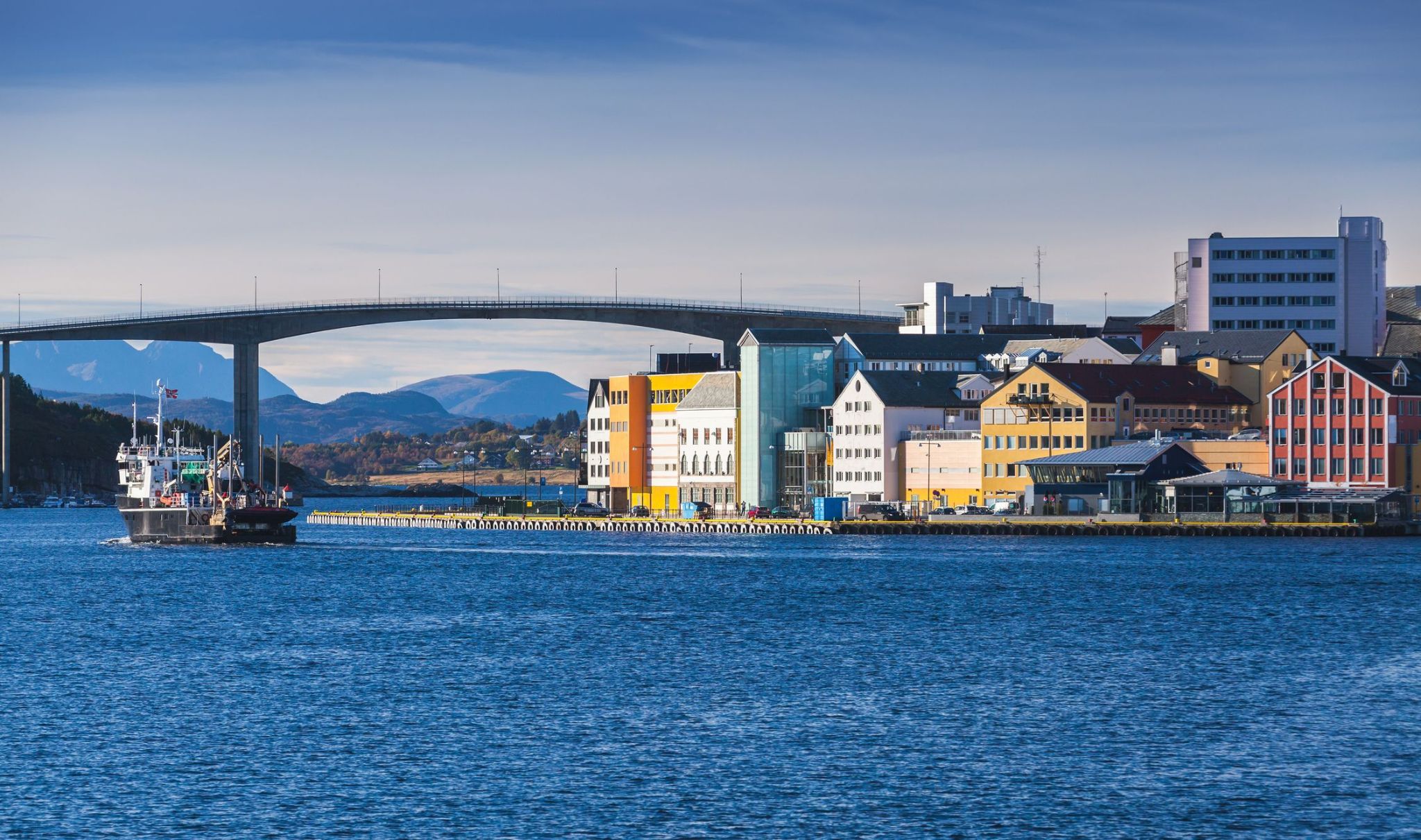
Najbardziej wysunięte na południe wybrzeże Norwegii zaprasza Cię do odkrycia niezwykłego miasta Kristiansand. To urocze miasteczko otoczone jest z trzech stron morzem. Jest to piąte co do wielkości miasto w kraju, a mimo że jego centrum mieści się na niewielkim obszarze zaledwie 1 km², Kristiansand ma wiele do zaoferowania swoim gościom. Nie chodzi tylko o niezwykle czyste norweskie powietrze, ale także o wiele innych interesujących atrakcji.
Wśród nich znajduje się największe zoo w Norwegii, w którym mieszka 80 gatunków zwierząt. Pobyt tutaj ucieszy zarówno dzieci, jak i dorosłych. Możesz przejechać się na karuzelach, pośmiać się w cyrku, a także wybrać się całą rodziną na rejs po morzu lub spędzić czas na placu zabaw.
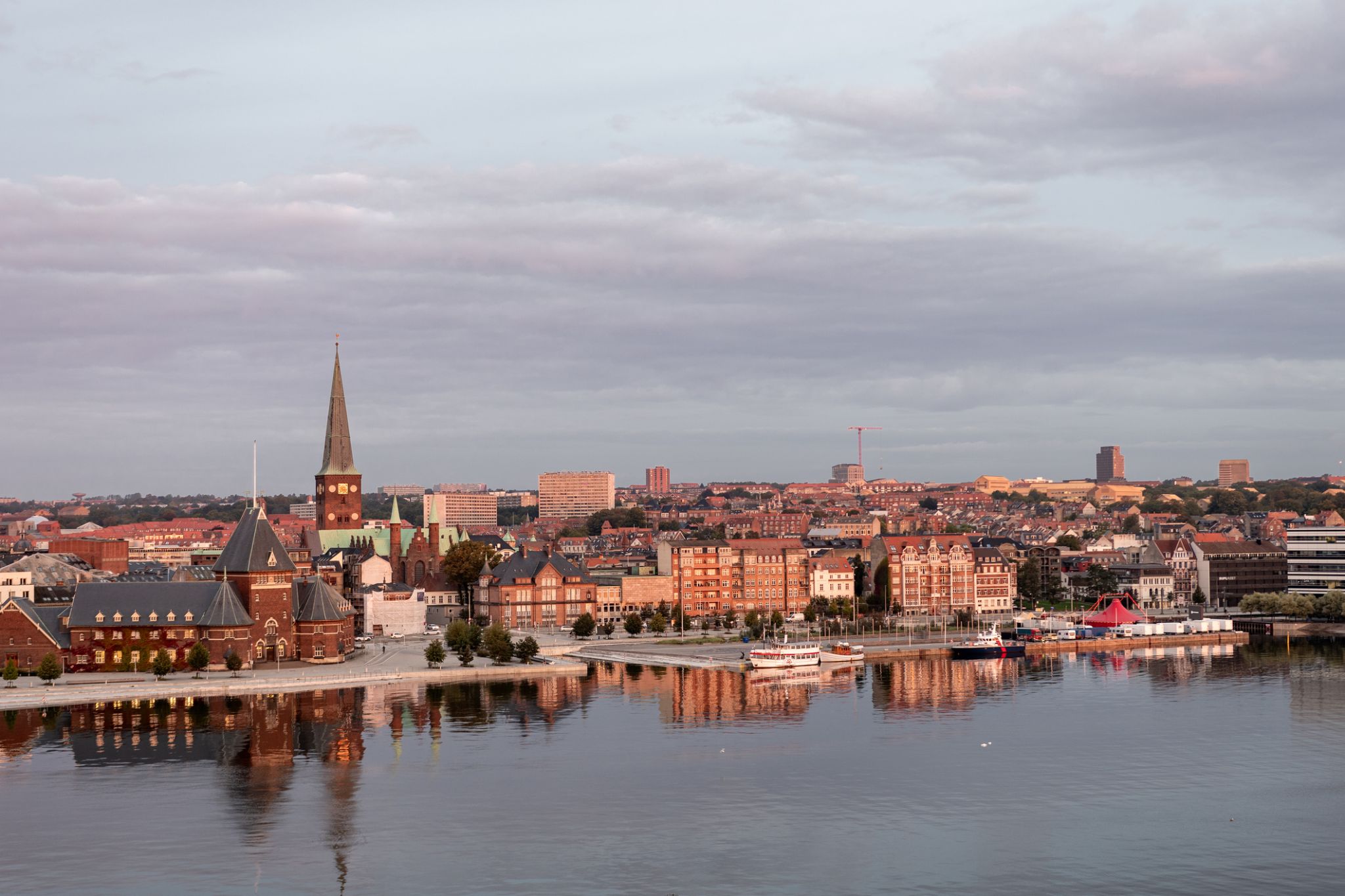
Aarhus is the second-largest city in Denmark and the seat of Aarhus municipality. It is located on the east coast of the Jutlandpeninsula, in the geographical centre of Denmark, 187 kilometres (116 mi) northwest of Copenhagen and 289 kilometres (180 mi) north of Hamburg, Germany. The inner urban area contains 273,077 inhabitants (as of 1 January 2018) and the municipal population is 340,421 (as of 2018). Aarhus is the central city in Business Region Aarhus and in the East Jutland metropolitan area, which had a total population of 1.378 million in 2016.
The history of Aarhus began as a fortified Viking settlement founded in the 8th century and with the first written records stemming from the bishopric seated here from at least 948. The city was founded on the northern shores of a fjord at a natural harbour and the primary driver of growth was for centuries seaborne trade in agricultural products. Market town privileges were granted in 1441, but growth stagnated in the 17th century as the city suffered blockades and bombardments during the Swedish Wars. In the 19th century it was occupied twice by German troops during the Schleswig Wars but avoided destruction. As the industrial revolution took hold, the city grew to become the second-largest in the country by the 20th century.
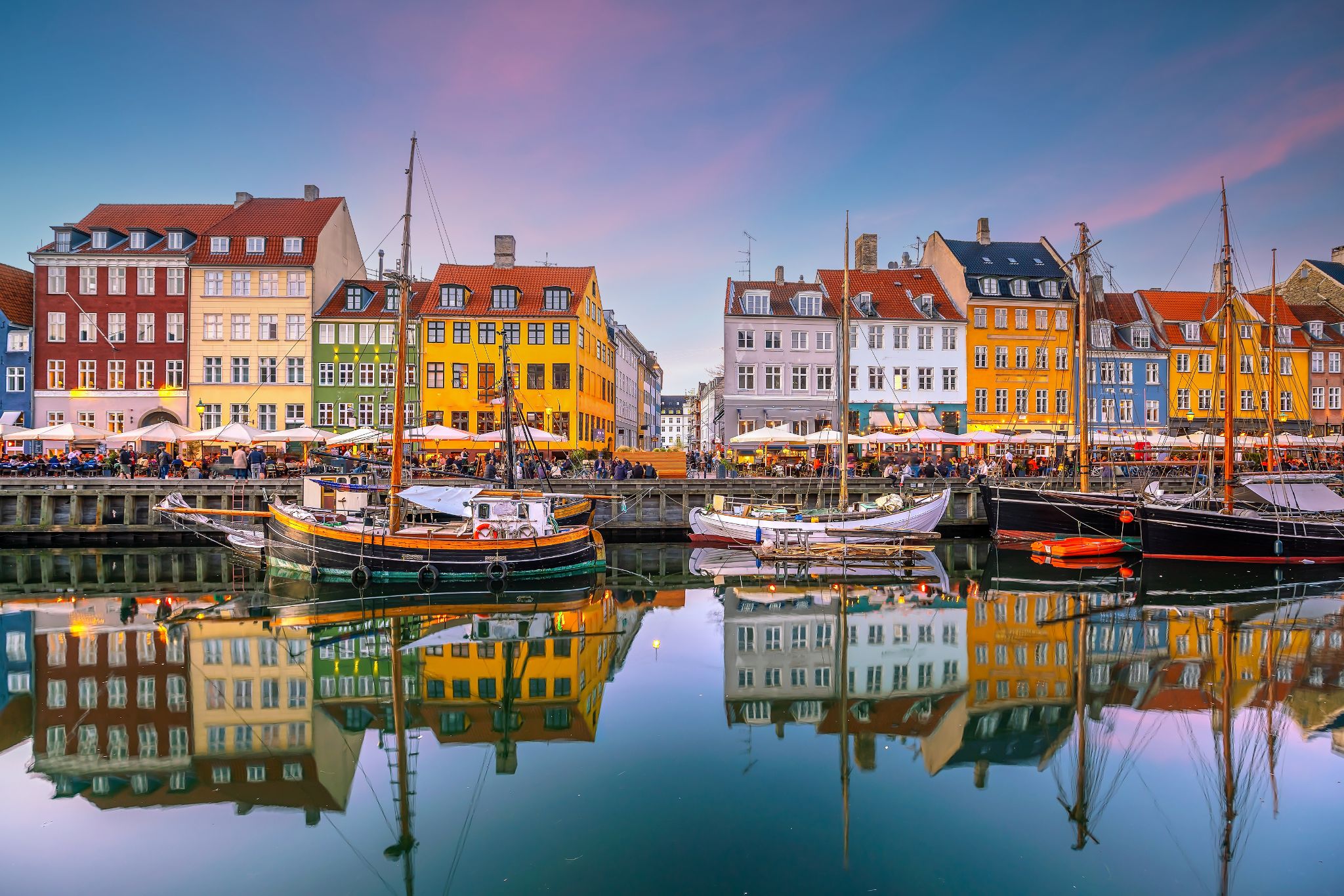
the capital and chief port of Denmark, a city that occupies the eastern part of Zealand and northern part of the island of Amager; population 518,574 (2009).
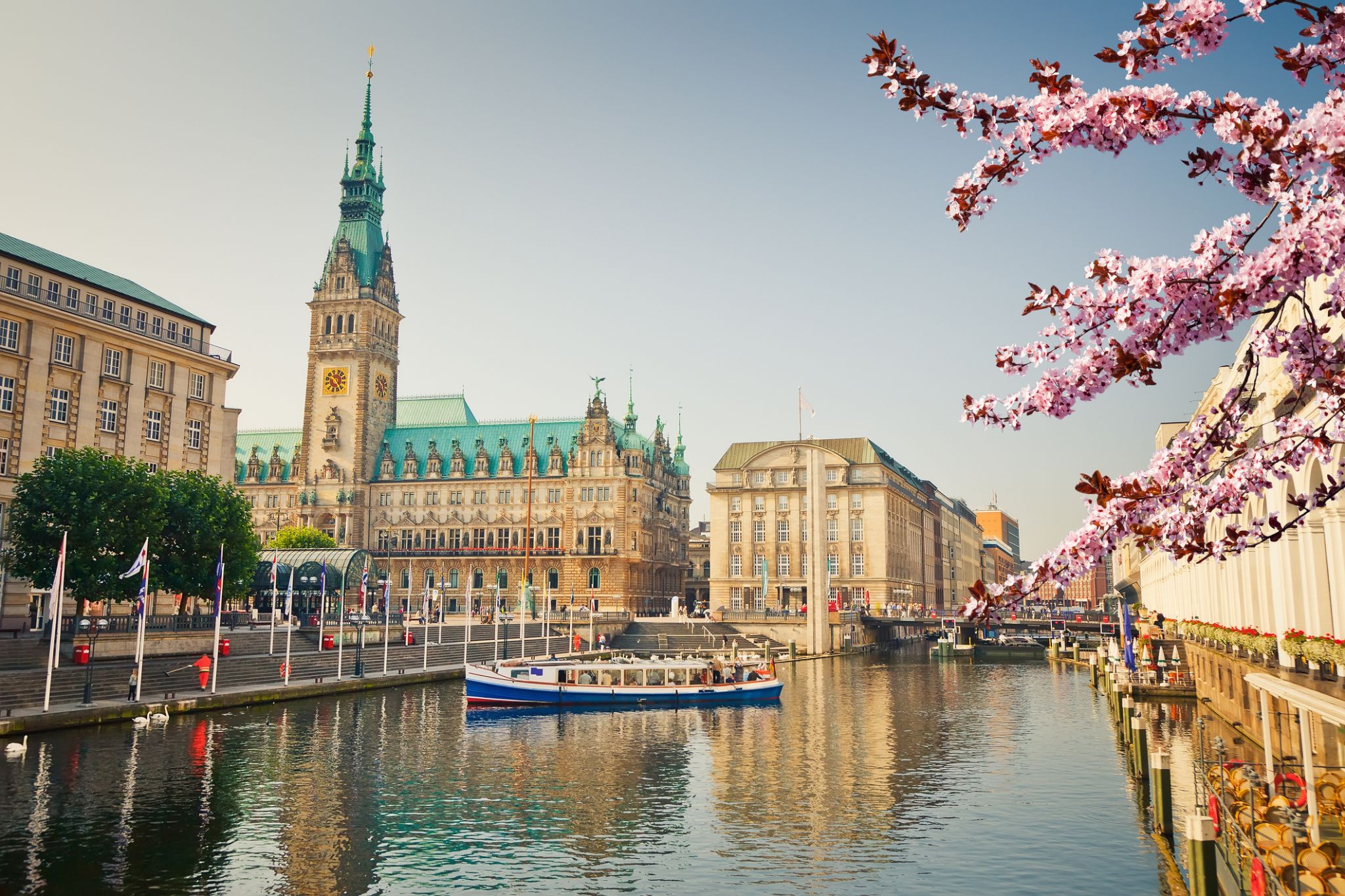
Hamburg ; officially the Free and Hanseatic City of Hamburg is the second-largest city in Germany with a population of over 1.8 million.
One of Germany's 16 federal states, it is surrounded by Schleswig-Holstein to the north and Lower Saxony to the south. The city's metropolitan region is home to more than five million people. Hamburg lies on the River Elbe and two of its tributaries, the River Alster and the River Bille.
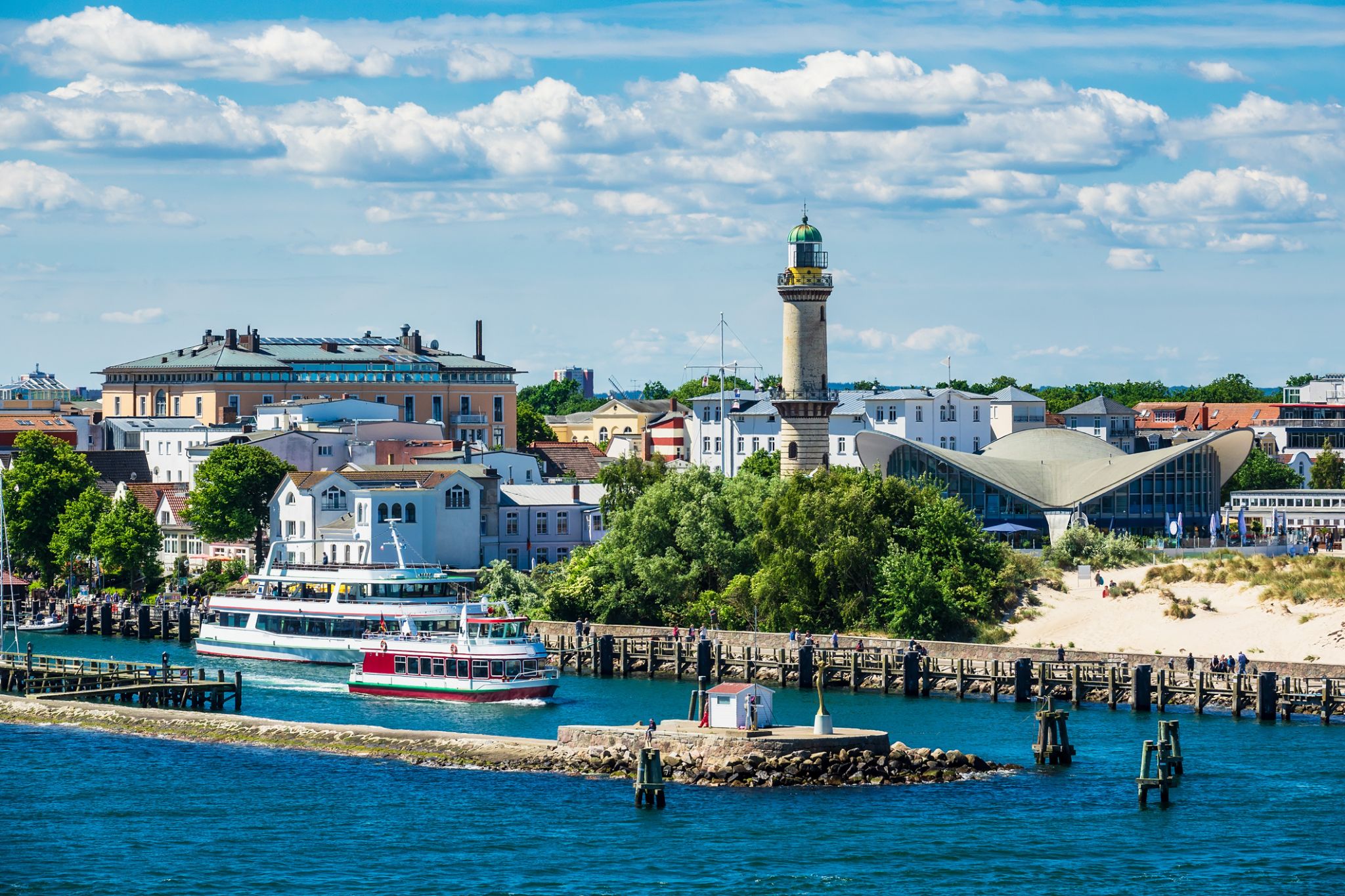
Baltic Sea resort in the northern part of the city of Rostock. The area was named along the Varnov River, which flows into the Baltic Sea here. The sandy beach is Germany's largest Baltic beach.
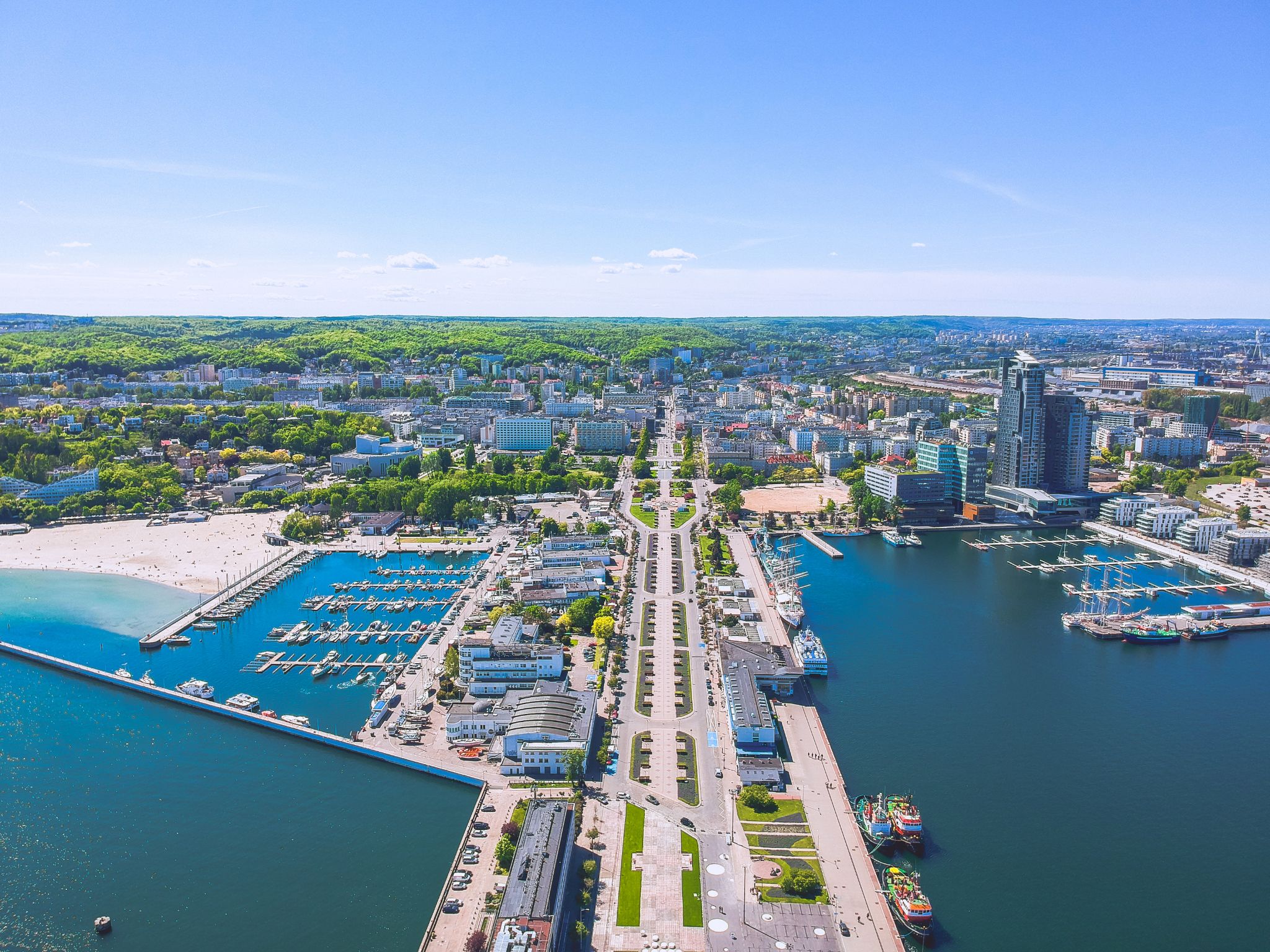
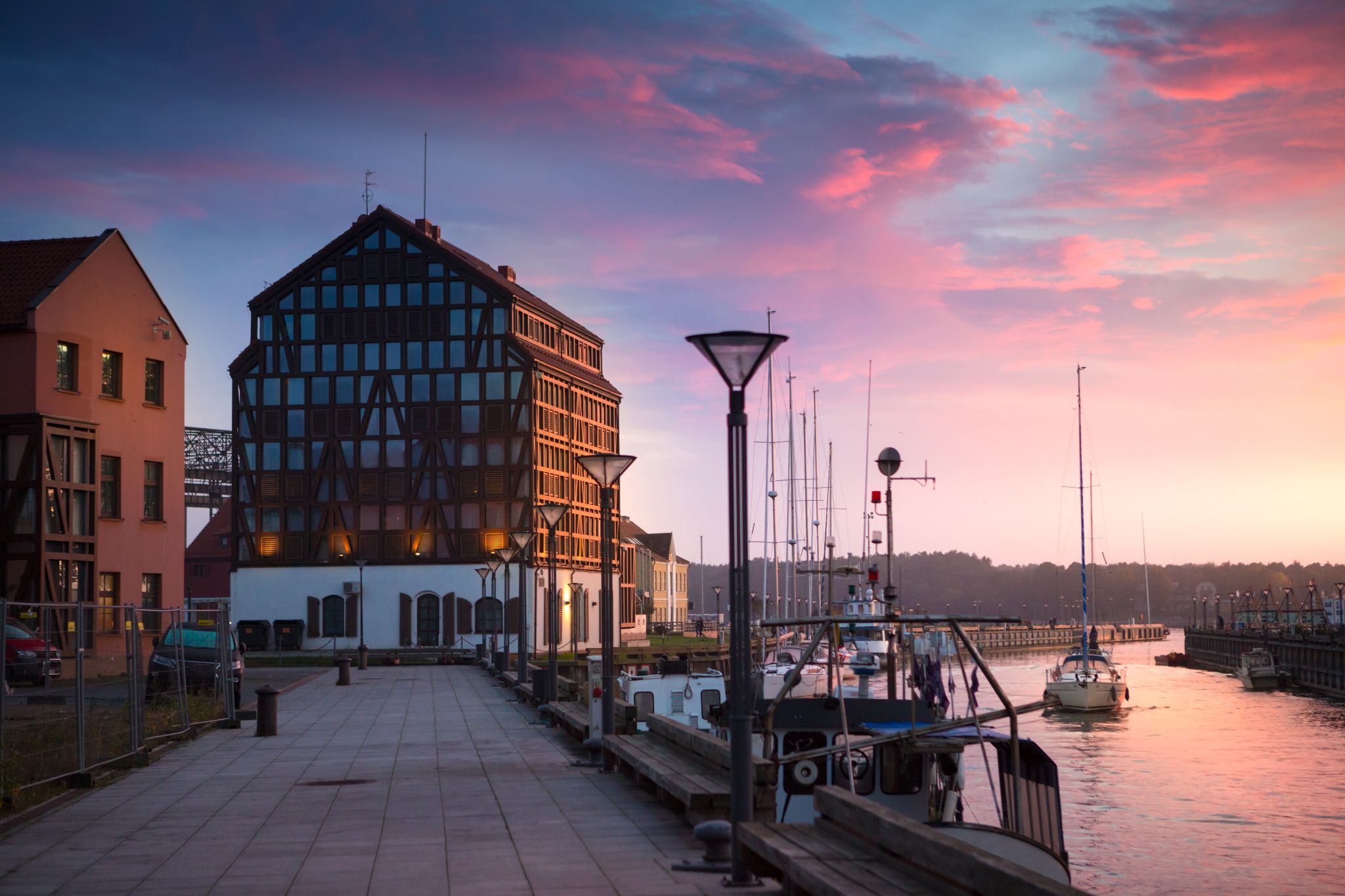
Klaipėda is a city in Lithuania on the Baltic Sea coast. It is the third largest city in Lithuania and the capital of Klaipėda County.
The city has a complex recorded history, partially due to the combined regional importance of the usually ice-free Port of Klaipėda at the mouth of the Akmena-Danė River. It was controlled by successive German states until the 1919 Treaty of Versailles. As a result of the 1923 Klaipėda Revolt it was added to Lithuania and has remained with Lithuania to this day, except for the period between 1939 and 1945 when it returned to Germany following the 1939 German ultimatum to Lithuania and the German–Soviet Union Molotov–Ribbentrop Pact.
The population has shrunk from the city to suburbs and the hinterland. The city had a population of 207,100 in 1992 to 157,350 in 2014 but the city is growing again. Popular seaside resorts found close to Klaipėda are Nida to the south on the Curonian Spit and Palanga to the north.

Riga is the capital and largest city of Latvia. With 637,827 inhabitants (2018), it is also the largest city in the three Baltic states, home to one third of Latvia's population and one tenth of the three Baltic states' combined population. The city lies on the Gulf of Riga, at the mouth of the Daugava. Riga's territory covers 307.17 km2 (118.60 sq mi) and lies 1–10 m (3 ft 3 in–32 ft 10 in) above sea level, on a flat and sandy plain.
Riga was founded in 1201 and is a former Hanseatic League member. Riga's historical centre is a UNESCO World Heritage Site, noted for its Art Nouveau/Jugendstil architecture and 19th century wooden architecture. Riga was the European Capital of Culture during 2014, along with Umeå in Sweden. Riga hosted the 2006 NATO Summit, the Eurovision Song Contest 2003, the 2006 IIHF Men's World Ice Hockey Championships and the 2013 World Women's Curling Championship. It is home to the European Union's office of European Regulators for Electronic Communications (BEREC).
In 2016, Riga received over 1.4 million visitors. It is served by Riga International Airport, the largest and busiest airport in the Baltic states. Riga is a member of Eurocities, the Union of the Baltic Cities (UBC) and Union of Capitals of the European Union (UCEU).
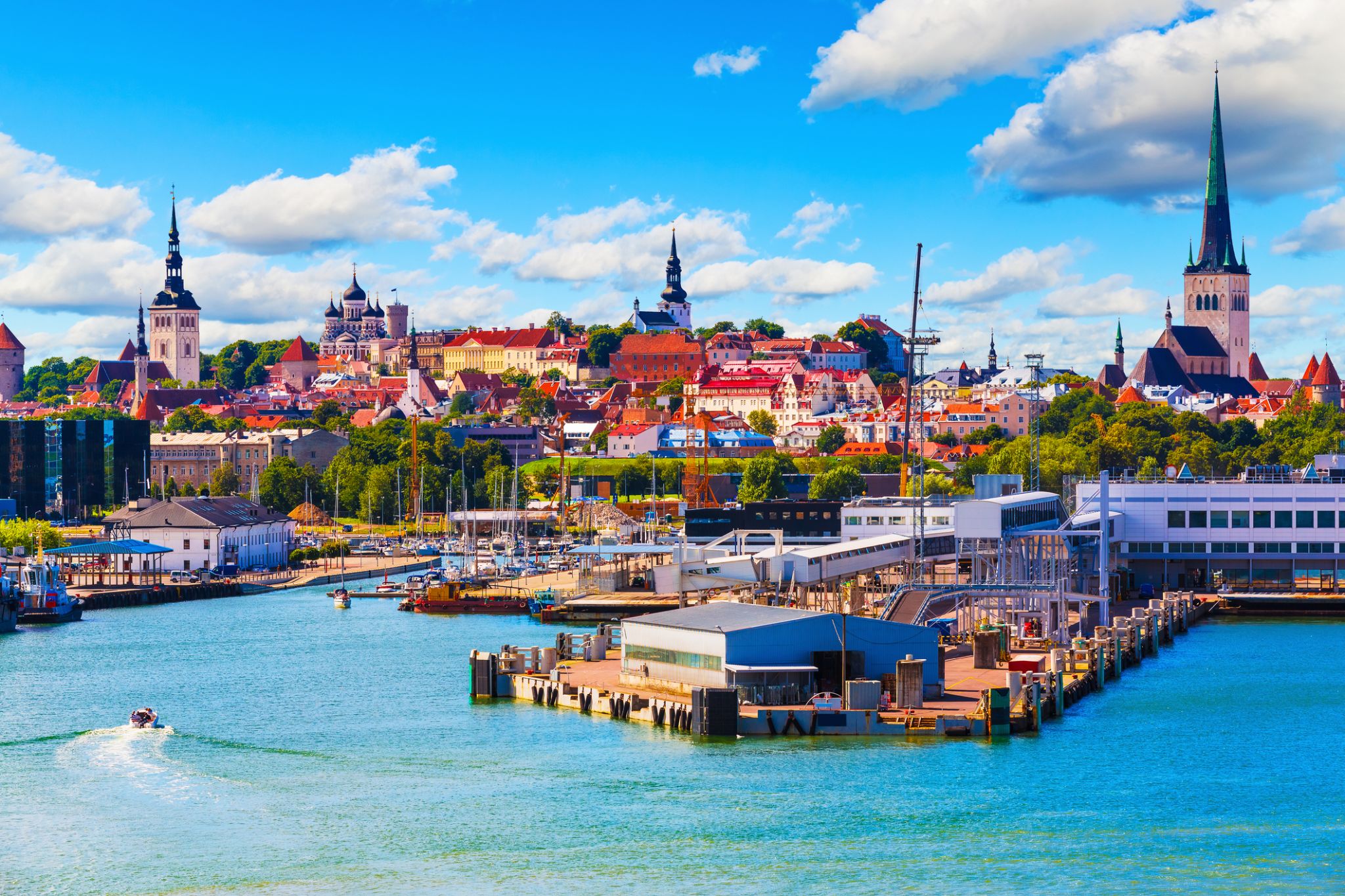
Tallinn is the capital and largest city of Estonia. It is on the northern coast of the country, on the shore of the Gulf of Finland in Harju County. From the 13th century until 1918 (and briefly during the Nazi occupation of Estonia from 1941 to 1944), the city was known as Reval. Tallinn occupies an area of 159.2 km2 (61.5 sq mi) and has a population of 453,033.
Tallinn, first mentioned in 1219, received city rights in 1248, but the earliest human settlements date back 5,000 years. The initial claim over the land was laid by the Danes in 1219, after a successful raid of Lindanise led by Valdemar II of Denmark, followed by a period of alternating Scandinavian and German rule. Due to its strategic location, the city became a major trade hub, especially from the 14th to the 16th century, when it grew in importance as part of the Hanseatic League.
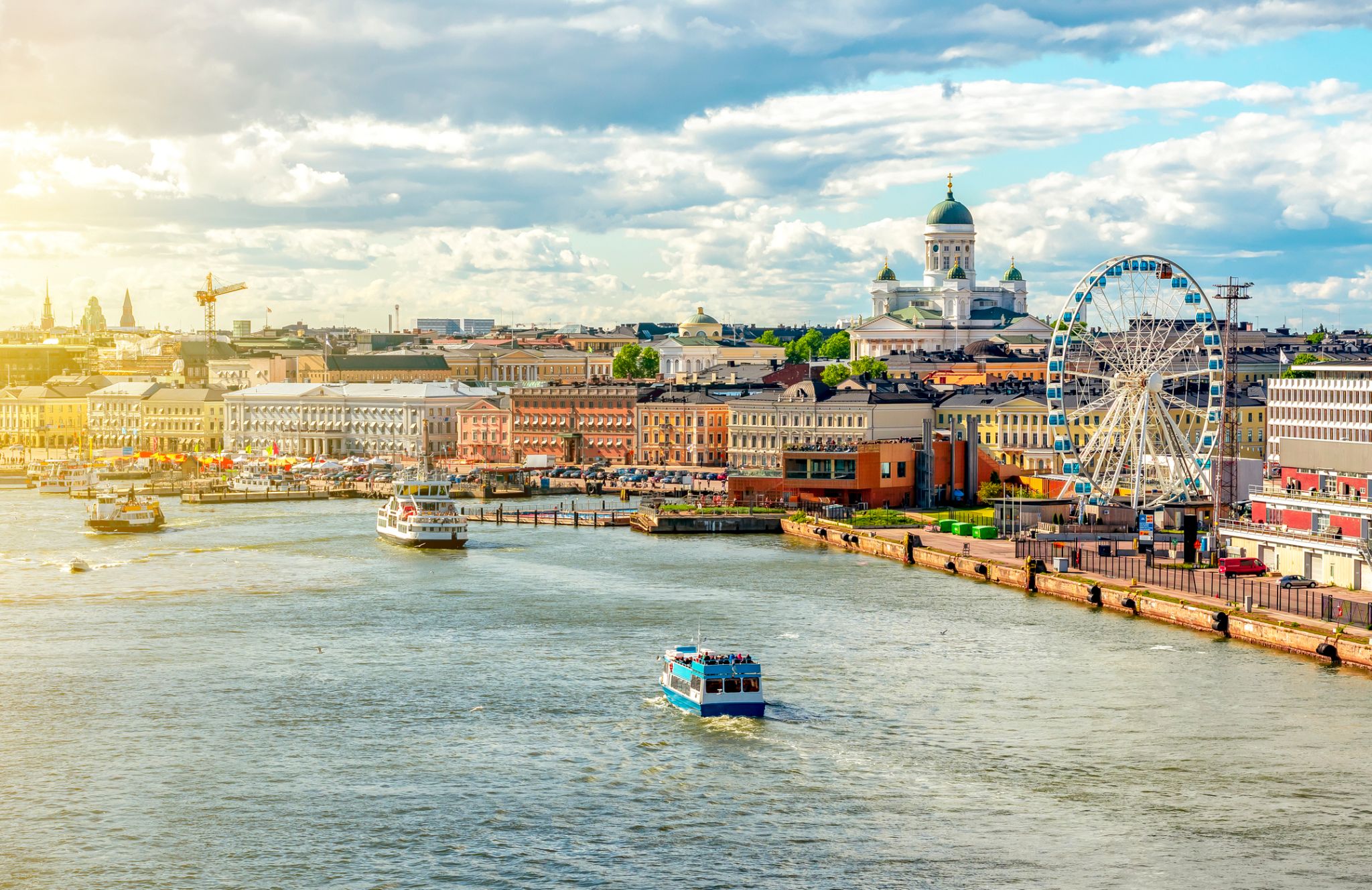
Helsinki located in the southern Finland, and has a population of 648,650. The city's urban area has a population of 1,268,296, it’s the most important center for politics, education, finance, culture, and research. Helsinki is located 80 kilometers (50 mi) north of Tallinn, Estonia, 400 km (250 mi) east of Stockholm, Sweden, and 390 km (240 mi) west of Saint Petersburg, Russia. It has close ties with these three cities.
Together with the cities of Espoo, Vantaa, and Kauniainen, and the surrounding commuter towns, Helsinki forms the Greater Helsinki metropolitan area, which has a population of nearly 1.5 million. Often being considered a metropolis of the EU member state. After Stockholm and Oslo, Helsinki is the third largest city in the Nordic countries. It is located in the city of Vantaa and is located in the city of Vantaa.
Helsinki was the World Design Capital for 2012, the 1952 Summer Olympics and the 52nd Eurovision Song Contest.
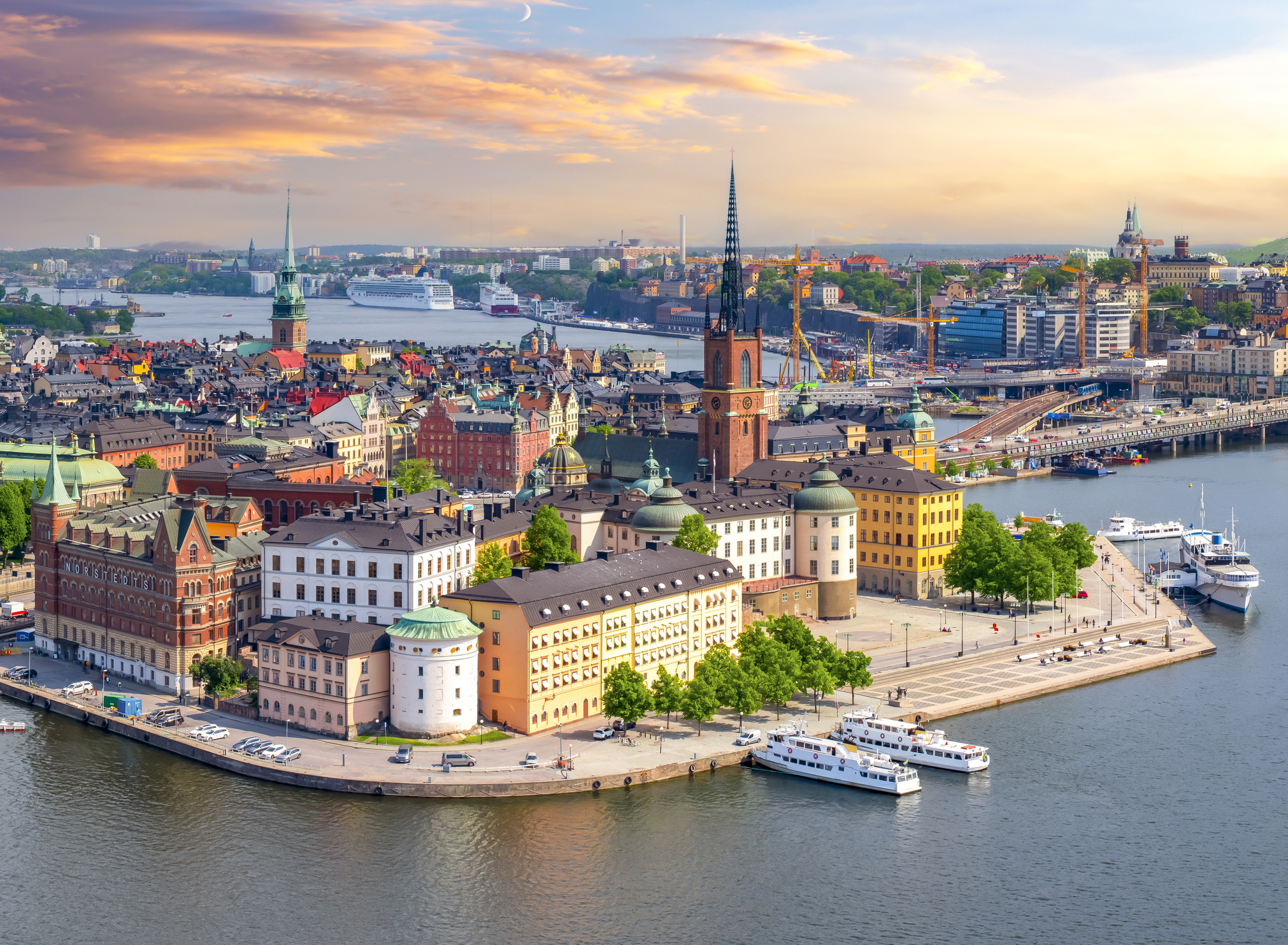
Stockholm is the capital of Sweden and the most populous urban area in the Nordic countries; 960,031 people live in the municipality, approximately 1.5 million in the urban area, and 2.3 million in the metropolitan area. The city stretches across fourteen islands where Lake Mälaren flows into the Baltic Sea. Just outside the city and along the coast is the island chain of the Stockholm archipelago. The area has been settled since the Stone Age, in the 6th millennium BC, and was founded as a city in 1252 by Swedish statesman Birger Jarl. It is also the capital of Stockholm County.
Stockholm is the cultural, media, political, and economic centre of Sweden. The Stockholm region alone accounts for over a third of the country's GDP, and is among the top 10 regions in Europe by GDP per capita. It is an important global city, and the main centre for corporate headquarters in the Nordic region. The city is home to some of Europe's top ranking universities, such as the Stockholm School of Economics, Karolinska Institute and Royal Institute of Technology (KTH). It hosts the annual Nobel Prize ceremonies and banquet at the Stockholm Concert Hall and Stockholm City Hall. One of the city's most prized museums, the Vasa Museum, is the most visited non-art museum in Scandinavia. The Stockholm metro, opened in 1950, is well known for the decor of its stations; it has been called the longest art gallery in the world. Sweden's national football arena is located north of the city centre, in Solna. Ericsson Globe, the national indoor arena, is in the southern part of the city. The city was the host of the 1912 Summer Olympics, and hosted the equestrian portion of the 1956 Summer Olympicsotherwise held in Melbourne, Victoria, Australia.
Stockholm is the seat of the Swedish government and most of its agencies, including the highest courts in the judiciary, and the official residencies of the Swedish monarch and the Prime Minister. The government has its seat in the Rosenbad building, the Riksdag (Swedish parliament) is seated in the Parliament House, and the Prime Minister's residence is adjacent at Sager House. Stockholm Palace is the official residence and principal workplace of the Swedish monarch, while Drottningholm Palace, a World Heritage Site on the outskirts of Stockholm, serves as the Royal Family's private residence.